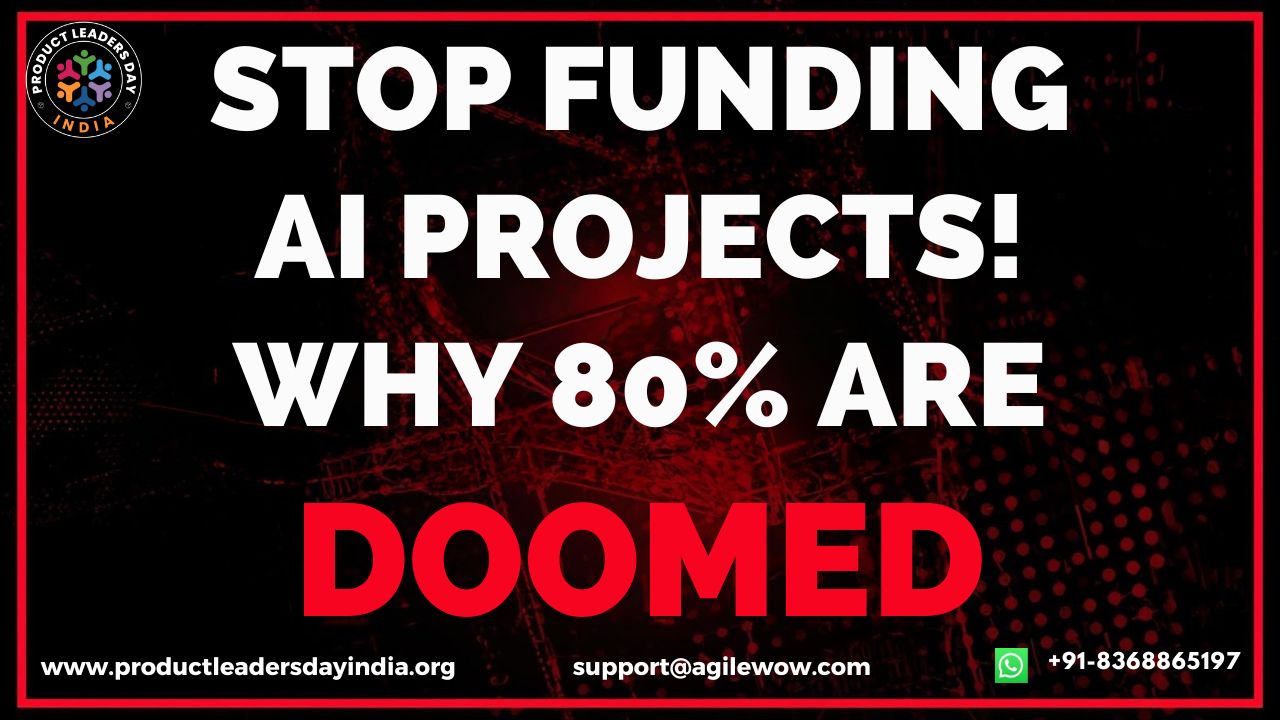
Organizations are pouring staggering resources into Artificial Intelligence, but a troubling reality is emerging: AI initiatives are failing at an alarming rate, as high as 80%.
The root of this massive disconnect, the AI paradox, is not a failure of the algorithms; its a failure of the operating model. Most companies are attempting to build the future of AI on the crumbling foundation of a rigid, outdated, project-based funding system.
To truly unlock business value, a shift is required: from funding temporary projects to funding durable products.
This newsletter is based on the article Why Funding Products (Not Projects) Matters Even More in the Age of AI.
5 Critical Reasons the Project Model Fails AI
1. High Failure Rates: The Project Model is Fundamentally Mismatched. AI development is an iterative process of continuous discovery and adaptation, unlike traditional projects that measure success by adhering to a fixed iron triangle of time, cost, and scope. Research cited by Harvard Business Review shows AI project failure rates are up to 80%, nearly double that of traditional IT projects. When forced into a project framework, teams focus on delivering pre-planned features instead of solving the underlying customer problem.
2. AI Creates a New, Costly, and Invisible Technical Debt: AI's technical debt is not a one-time fix; it is a continuous, invisible tax on the model's value. Core problems include:
Model Deterioration & Statistical Drift: An AI model's predictions naturally become less accurate as the real world changes.
Data Drift: The underlying data feeding the model changes, eroding performance.
A project model, with its fixed end date and temporary team, is unequipped to handle this decay. Only a product model that establishes a durable, long-term team can manage the continuous monitoring, retraining, and feature refreshing required to protect your AI investment.
3. The Product Model is Decades Old and Proven by Industry Giants: Organizing around products is not a new trend. Its principles are rooted in a century of innovation, from Procter & Gamble’s first product management role in 1931 to Toyotas Production System in the 1940s and the 2001 Agile Manifesto.
The model's power is demonstrated by companies like:
Amazon Prime: A masterclass in product strategy, discovery, and delivery that created massive customer loyalty.
JPMorgan Chase: Generated $1.5 billion in business value from its AI-enabled product operations.
Microsoft: Achieved a 60% reduction in manual work and 20% faster feature delivery.
4. Funding Products Means Strategic Spend Envelopes, Not Blank Checks: Shifting to product funding is not about losing accountability. It’s a strategic shift from funding inflexible projects to funding durable, capacity-based teams organized around customer value.
As exemplified by TD Bank's transition, organizations can evolve to allocating a spend envelope, a yearly budget, to a specific product line. The product owner, accountable for business outcomes, manages those funds to achieve agreed-upon goals.
5. It’s a C-Suite Strategy for Long-Term Value: Moving to a product operating model aligns the entire organization with a foundational shift toward stakeholder capitalism, where long-term value creation is paramount over short-term profits. Highly mature product-led companies achieve 60% greater total returns to shareholders and 16% higher operating margins compared to their project-based peers.
Fund Value, Not Arbitrary Deadlines
The project model is a relic of a pre-digital era actively sabotaging AI initiatives. Success in the age of AI requires a fundamental shift to a product operating model—a shift from managing costs to managing value.
This means funding durable teams organized around customer outcomes, not temporary projects measured by arbitrary deadlines. The organizations that master this will define their industries for the next decade.
References
Original Article: This newsletter is based on the article Why Funding Products (Not Projects) Matters Even More in the Age of AI.
